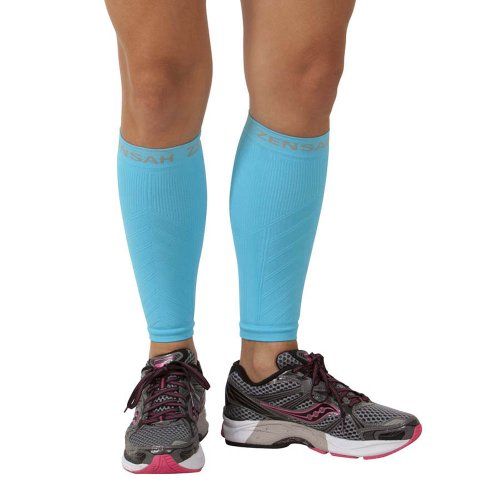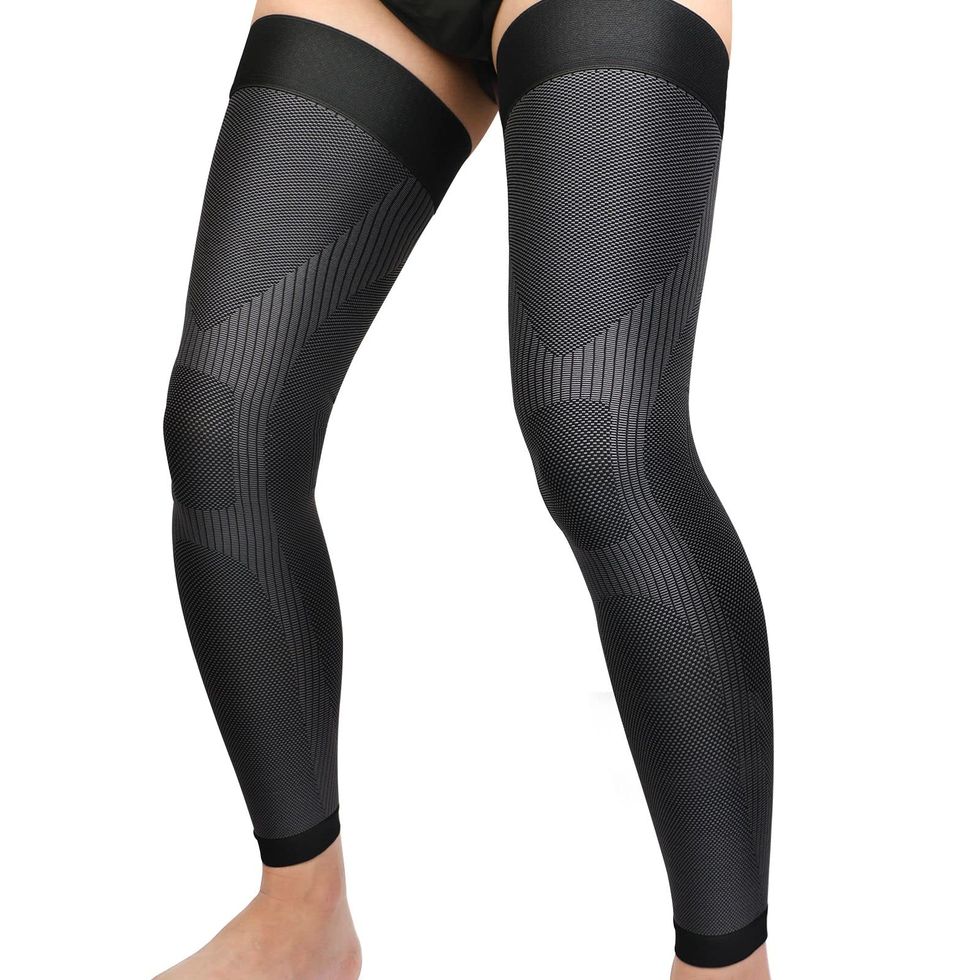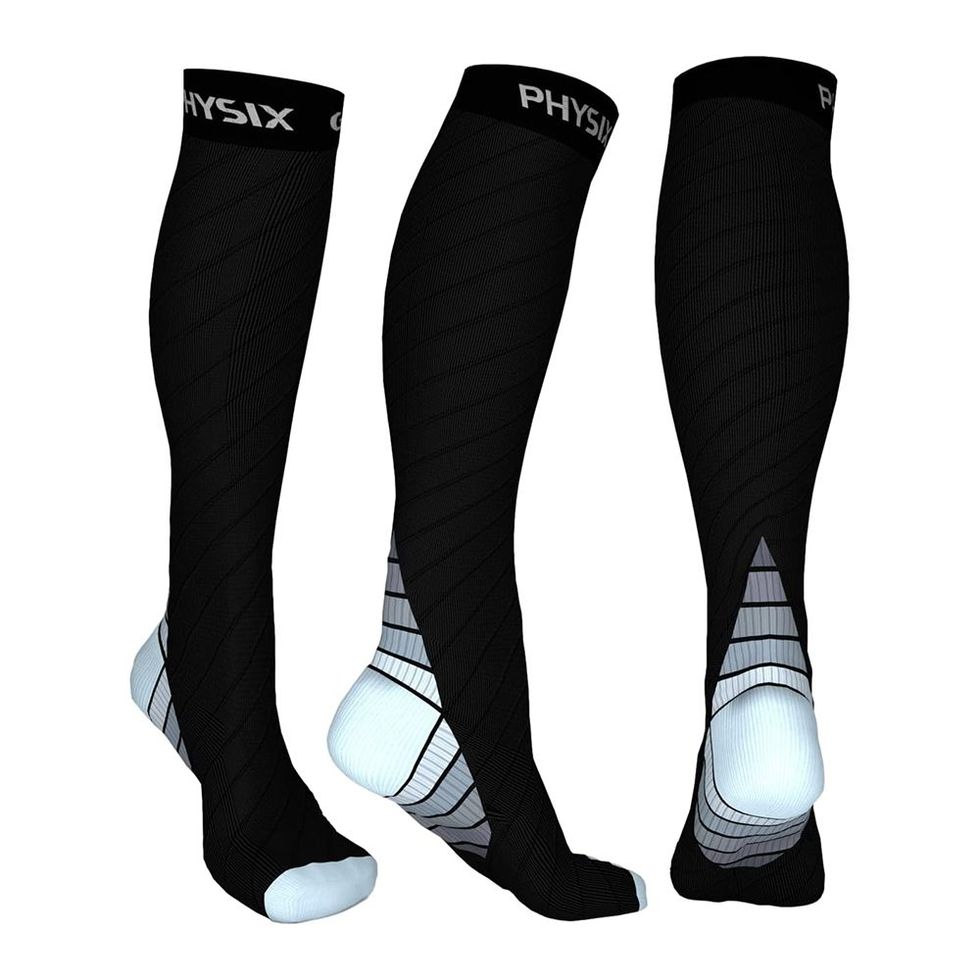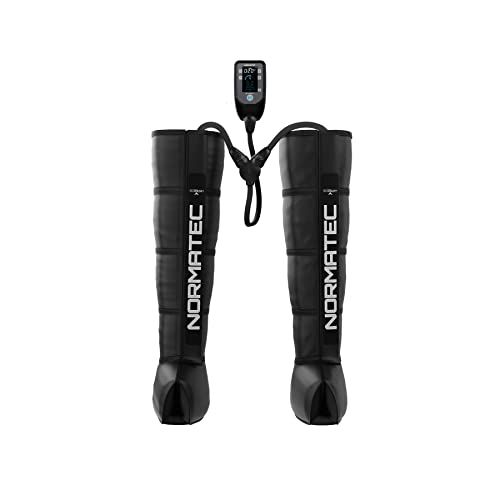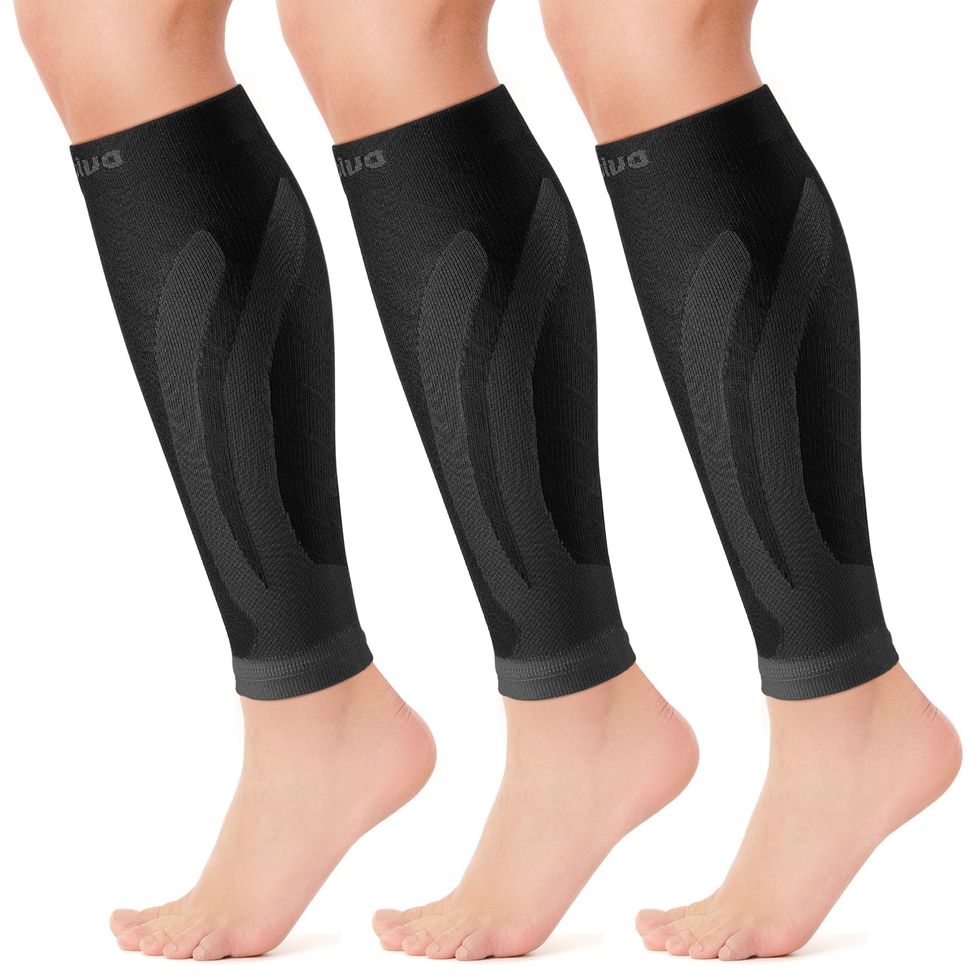The 7 Best Men’s Compression Leg Sleeves for Boosting Circulation and Dodging Shin Splints
Speed up recovery and reduce leg swelling.
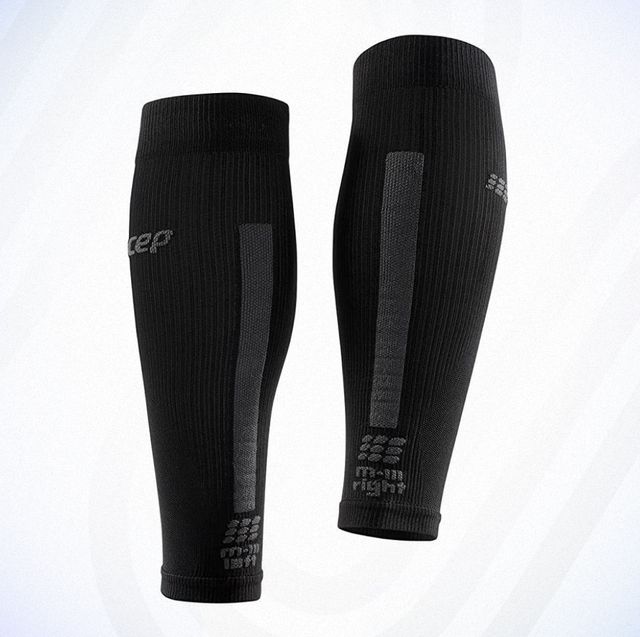
We earn a commission for products purchased through some links in this article. Why Trust Us?
Nothing slams the brakes on your running as quickly as shin splints. Irritating at best and debilitating at worst, you need a way to relieve the condition before it worsens. Leg compression sleeves are a great way to alleviate the pain and improve circulation, speeding up your recovery. Even if you’re not a runner or don’t suffer from shin splints, these leg sleeves are an effective way to reduce swelling, whether due to injury, activity, prolonged sitting, or air travel.
We recommend a slew of men’s compression leg sleeves, from medical-grade leg sleeves to help recover from serious strains to thin sleeves that’ll help prevent soreness.
For more great compression and recovery tools, check out our picks for the best ankle sleeves, arm sleeves, and ice packs.
The Best Men’s Compression Leg Sleeves
- Best Overall: Zensah Compression Leg Sleeves
- Best for Calf Strain: McDavid 441 Deluxe Calf Compression Sleeve
- Best for Runners: CEP Compression Run Sleeves
- Best for Full Leg: Keking Full Leg Compression Sleeves
- Best for Travel: Physix Gear Sport Compression Socks
What to Consider
Compression
Compression sleeves, whether for arms or legs, support your muscles by applying even pressure to your entire extremity. The pressure increases blood flow during recovery and runs. It also stabilizes the muscles and tendons, reducing lactic acid build-up known to cause fatigue and soreness. Since shin splints are a combination of inflammation and small muscle tears, this extra blood flow can help you recover faster—and, moreover, compression sleeves can help prevent shin splints in the first place.
Each compression leg sleeve on this list provides around 15 to 30 millimeters of mercury (mmHg) of compression, a metric commonly used to calculate blood pressure. According to medical studies, 14.7 to 29.4 mmHg is the ideal amount of compression for sports, medical recovery, and treating varicose veins. Less compression won’t optimize blood flow, and more can cause numbness and less efficient energy return. For all-day comfort while you recover or work at a desk job, opt for 20 to 30 mmHg of compression.
Fit and Material
Tightness aside, comfort depends on the sleeve’s ability to retain heat, wick away moisture, and feel soft against your skin. If you’re seeking a solution for all-day travel, sleep, or office work, consider a compression sock instead, which starts at the foot, helping blood from becoming stagnant by increasing blood flow, thus preventing swelling. By comparison, compression leg sleeves cover the calf, making them better for athletes and runners while granting ankle flexibility.
Fitness apparel is made of synthetic fibers (nylon, polyester, or spandex), natural fibers (wool, cotton, or bamboo), or a combination of both. Synthetic fabrics are lighter and quickly wick away moisture, preventing bacteria growth. Some athletes find natural fibers softer and more comfortable.
Sleeves with a high percentage of spandex, sometimes called elastane or Lycra, offer more stretch for those with large calves. In any case, it’s best only to wear compression leg sleeves during movement and fitness routines, taking them off between sessions to prevent foot swelling.
Sizing
Compression leg sleeves are sized by calf circumference, which you can measure with a flexible measuring tape. If you don’t have one, you can measure your calf circumference with a piece of string or even a power cord by wrapping it around your calf, then measuring that length with a ruler. If you’re between sizes or at the top of a compression leg sleeve’s particular size range, it’s best to size up.
UPF
Consider sun protection if you wear your compression leg sleeves outdoors with shorts. UPF—or ultraviolet protective factor—measures the amount of UV rays a piece of clothing allows to reach your skin. Much like the SPF in your sunscreen, the higher the number, the better protection from the sun. A product with a UPF rating of 30 allows one-thirtieth of UV rays to reach your skin, while UPF 50 brings that down to one-fiftieth. As with all sun protection, any coverage is better than none for preventing sunburns and reducing the likelihood of skin cancer.
How We Selected
To find the best compression leg sleeves for men, we researched popular models and considered their materials, design, efficacy, comfort, and price. We looked to the brands we most frequently rely on for our own runs, as well as those we trust to make high-quality running gear that lasts a long time. We also read through customer reviews by people who’ve bought men’s compression leg sleeves to find potential problems we didn’t identify on our own.
Nick Hilden is a writer, globetrotter, and jack-of-many-talents who has written gear reviews for the likes of Runner’s World, Popular Science, Men’s Health, Thrillist, the Daily Beast, the Los Angeles Times, Greatist, and the Manual, and his lifestyle, culture, and tech writing has also appeared in Scientific American, Afar, Salon, Vice, Healthline, and many others. Before entering journalism some 15 years ago, he worked as a bartender, brewery manager, sound engineer, recording and touring musician, cook, teacher, and in a variety of other trades. These days, he lives all over the world, performs music sporadically, and spends a lot of time thinking how to best improve his Honda Element conversion.
Before joining Runner's World, Gabrielle Hondorp spent 6 years in running retail (she has tested top gear from shoes, to watches, to rain jackets which has expanded her expertise—and her closets); she specializes in health and wellness, and is an expert on running gear from head-to-toe. Gabi began her journalism career as a Digital Editorial Fellow for Runner’s World and Bicycling Magazine, and has since advanced to a Runner's World Editor specializing in commerce. She has a double degree in English and Media and Communication from Muhlenberg College where she also ran cross country and track.


The 6 Best New Balance Running Shoes
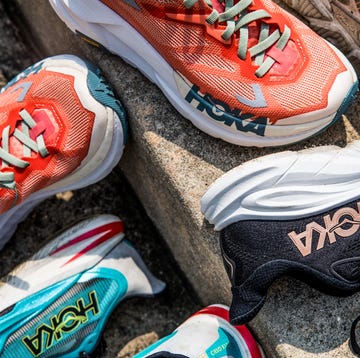
The 10 Best Hoka Running Shoes of 2025

6 Best Jogging Strollers for Every Active Parent

Save 31% on Shokz OpenRun Headphones on Amazon Now
